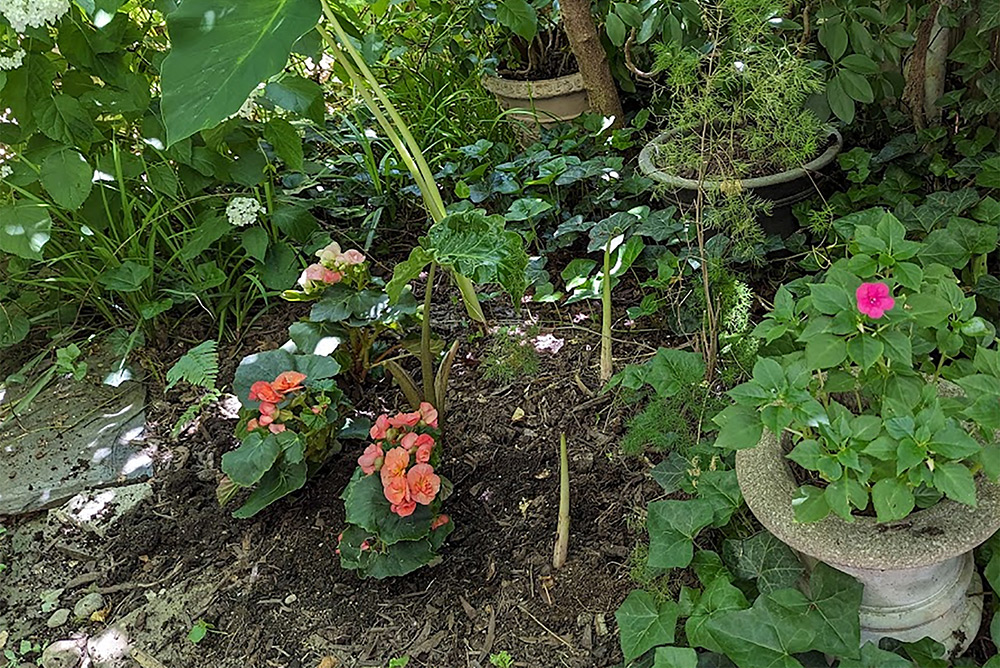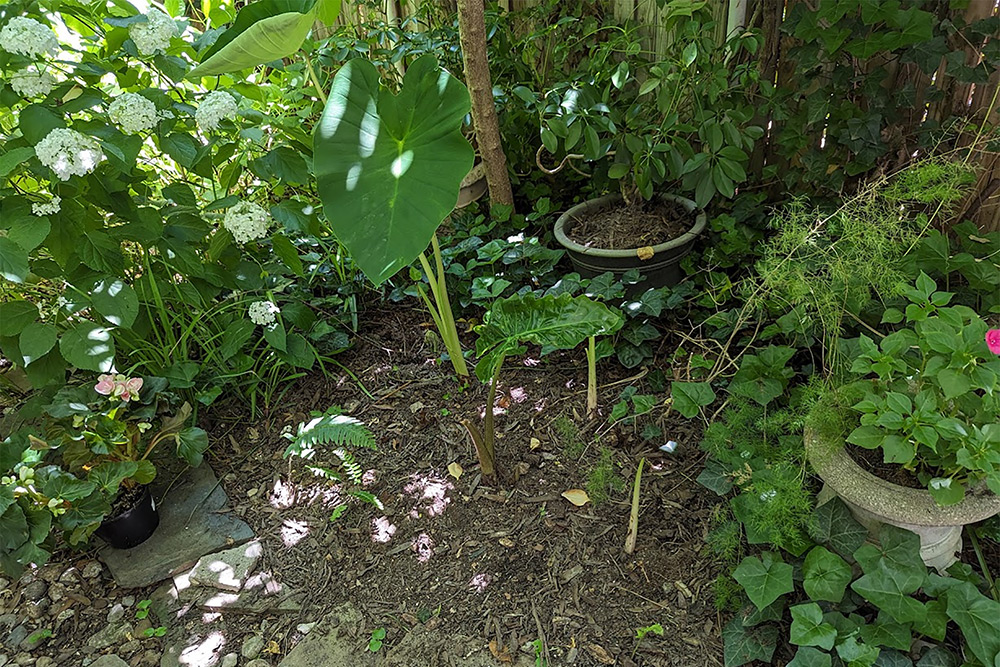
These begonias help fill in a bare space in a border. They’ll spread as they grow, covering more space until the bulbs planted deeper in the ground decide to make an appearance. / Photo by Stephanie Cavanaugh.
By Stephanie Cavanaugh
TAKING MY OWN advice is always an exciting activity. One just never knows.
Last week I discussed filler plants, meaning you have a spot that’s doing nothing but there are theoretically bulbs under there making up their minds about appearing.
In my good time, missy. Bug off.
But tomorrow I have guests, and there’s that dirt patch front and center in one border, which may or may not look gorgeous in another few weeks. So, I’m overplanting. That does not mean planting too much, rather planting on top of what might be there. (Do note the may or may not and the might. Because that’s the way it goes.)
If those bulbs do appear, and the border looks messy and overcrowded, annuals are easy to move to a pot or another needy patch of garden—there’s always one.
In this case, I picked up a couple of magnificent begonias at Ginkgo’s, the delightful little garden boutique a few blocks from my home in Washington DC’s Capitol Hill neighborhood. One is a sweet pink, pale and dancerly, the other a pinky orange, a more tropical hue and a bit brighter, though not LOUD. Soft tones best suit my shady garden.
They’re particularly well grown, with two large plants per pot, and plenty of stems to make more. Taking them apart gives me four begonias, which will be just right for this situation.

Elephant ears are starting to emerge (the giant leaves in center rear), but other bulbs and corms are still underground, leaving room for the new begonias. / Photo by Stephanie Cavanaugh.
If you’re new to gardening, it might not occur to you that big pots and hanging baskets often contain multiple plants. That’s easy enough to see if the pot sports a variety of blossoms. But if you look closely at, say, a big basket of impatiens, you’ll see numerous clumps, all of which can be planted individually.
At the risk of upsetting someone who’s bound to complain that I’m somehow cheating the poor vendors, there are lots of flowering annuals that can immediately and easily be divided.
At Ginkgo’s, which is excellent but pricy, small pots of begonias run about $5 and big ones, like the ones I bought, were $14. The plants themselves were also much larger and leafier, promising not only twice as many plants for the garden, but plenty of material for propagation by cuttings. At this time of year, those cuttings will be little plants in a matter of weeks.
You can start begonia cuttings directly in the garden by snipping a few branches, dipping the cut ends in rooting hormone, and sticking them right in the ground—I suggest one of my favorite tools, the chopstick, for this. It makes perfectly sized stem holes. Then water thoroughly—and make sure the cuttings don’t dry out.
Cuttings can also be put in water to root. I have a collection of little vases and usually make a floral display of them on the living room mantel. There are no further instructions beyond “stick them in water.” In a few days, or maybe a week, roots will appear. You can now grab your chopstick and plant the stem.
The water method for cuttings can, by the way, be applied to many plants, flowering and not. The gardening website Mod + Mint has a list of 35—though they don’t mention geraniums, which is surprising since they’re such happy summer plants, so I’m adding it for you.
